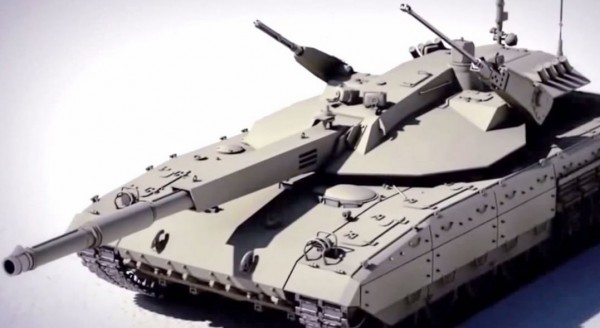Russia's new and futuristic-looking main battle tank, the T-14 Armata, gives the Ground Forces of the Russian Federation (or the Russian army) a tank that might be the equal of the proven U.S. M1A2 Abrams in a future conflict.
The T-14 will feature several radical improvements that are a first in tank warfare. This Russian beast has an unmanned remotely controlled turret armed with a new 125 mm 2A82-1M smoothbore gun with 32 rounds.
The Russians said the muzzle energy of this gun is greater than the world's best tank gun, the Rheinmetall 120 mm gun mounted on the German Leopard 2. They also claim the accuracy of the T-14's 125 mm gun has been improved by 15 to 20 percent.
Apart from tank rounds, the gun will be able to fire a new laser-guided missile with a tandem anti-tank warhead out to 5,000 meters. Variants of the T-14 might also mount a specially developed 152 mm gun, which will be the most powerful gun ever to equip a main battle tank.
In addition to the main gun, the turret mounts a 30 mm multi-barreled machine cannon to engage slow moving aircraft such as drones and helicopters and a Kord 12.7 mm heavy machine gun to attack soft targets like enemy infantry.
The Russians also claim the Kord is capable of shooting down incoming projectiles such as anti-tank missiles approaching at speeds of up to 3,000 meters per second.
The gunner, the commander and driver are positioned in the hull beneath the turret and protected by an armored capsule. The tank will be digitally controlled, a feature that will eventually lead to the development of a fully robotic tank.
The T-14 is protected by a special lightweight armor whose composition is classified. It weighs 55 tons and has a top speed of 75 km/h. The new tank is under development at Uralvagonzavod in Nizhny Tagil.
The T-14 is one of the configurations of the "Armata Universal Combat Platform," an advanced next generation heavy military tracked vehicle platform with multiple uses.
The platform will be produced as a main battle tank (the T-14); a heavy infantry fighting vehicle; a combat engineering vehicle; an armored recovery vehicle; a heavy armored personnel carrier; a tank support combat vehicle and several types of self-propelled artillery.
The Russian army has ordered 2,300 T-14s by 2020, enough to equip 70 percent of its total tank fleet.
The T-14 will replace the current Russian MBT, the obsolete T-80 that has been in service since 1976.


